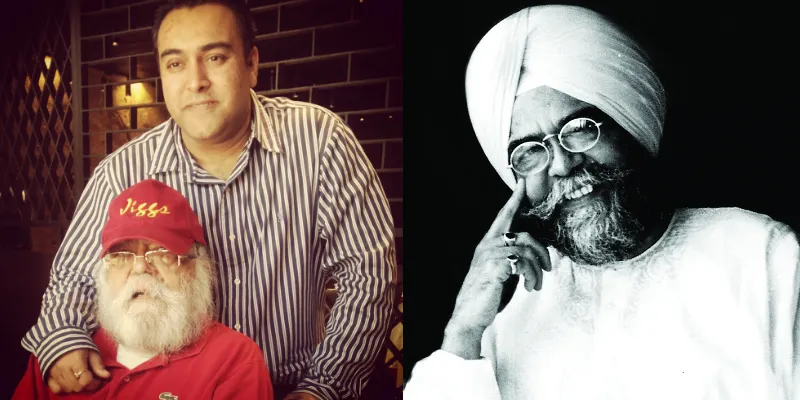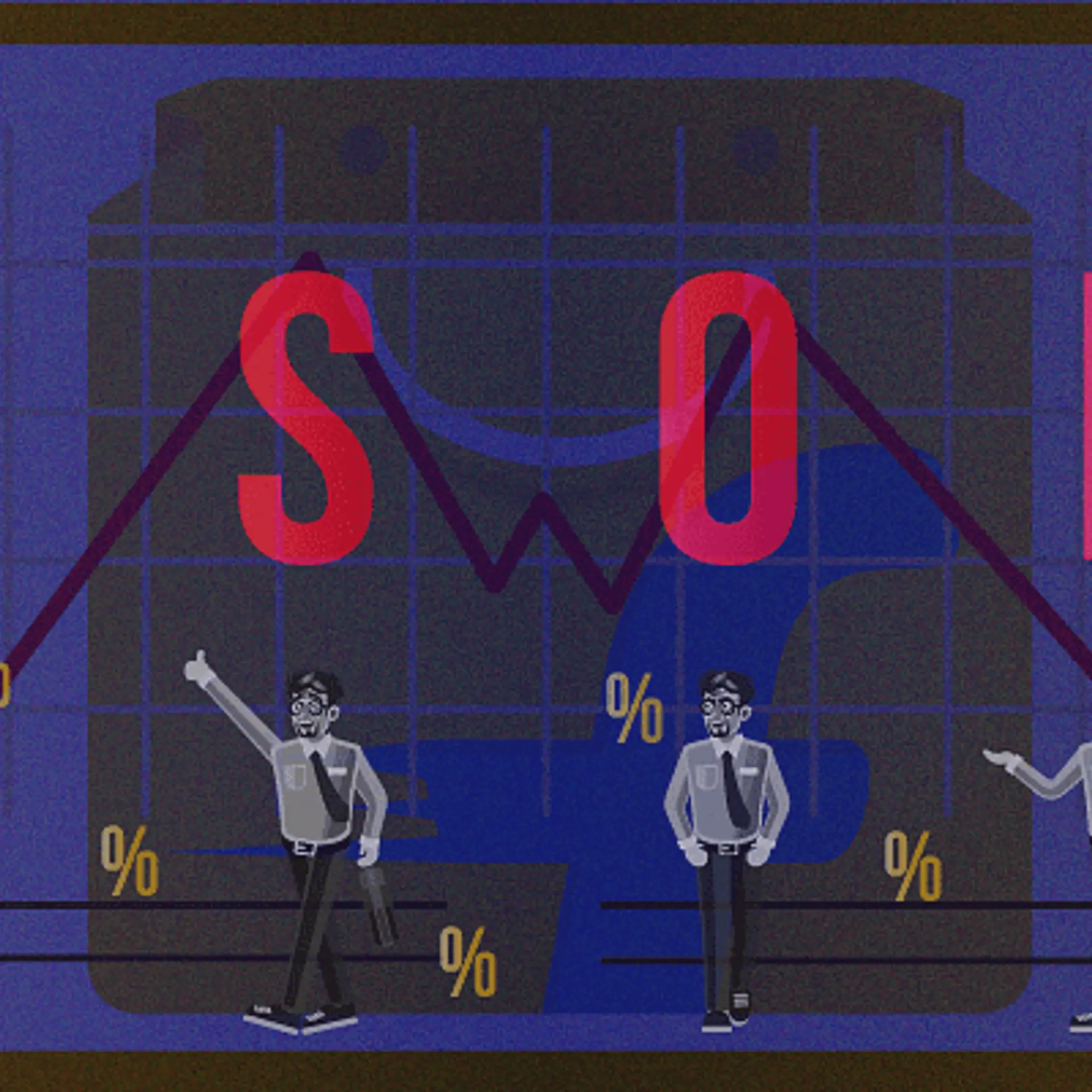Jiggs and Zorawar Kalra, the duo behind India’s most popular restaurants, share their recipe for success
Food Czar Jiggs Kalra and his son have revived the lost cuisine and cooking styles of different regions, and are working on the evolution of food at their speciality restaurants.
If you claim to be a connoisseur of India’s culinary treasures, you cannot have escaped Jiggs’ Kalra’s strides in the field, perhaps through an opulent dining experience you reserved 15 days in advance.
If you excitedly flipped through newspapers when they started serving up ancient Indian secrets of food preparation, chances are you revelled in them with one of the first food writers of our time – Jiggs again.
And if you are studying the art of cooking and the science of hospitality, you probably found your feet through texts Jiggs authored.
Jiggs Kalra, 70, is ubiquitous in – and some would even say synonymous with – Indian cuisine. And his son, whose passion was marinated in this very fanfare around food at the Kalra household and matured over his own exploits around the world with his father, is now paying him the most fitting tribute.
The father-son duo is the heart and brain behind some of India’s most popular restaurant chains.

Chef’s hat or combat helmet?
Given his defence background, Jiggs was pretty much in the figurative “line of fire” before he could say “food”. “My father expected me to follow in his footsteps. But I had other plans. Reading and writing was a passion for me from a very young age. My grandmother and mother would make the most amazing traditional Punjabi homecooked food. My grandmother had a unique way of cooking – she would cook everything on low heat. Every 15-20 minutes, she’d enter the kitchen, add a bit of water to the vessel, taste it, and go away to complete household chores. That was my introduction to cooking on dum,” he recounts.
He came to associate joy with food, and food with art – something that takes passion and patience. So, after getting his bachelor’s in commerce degree from Calcutta University, he got an opportunity to work as a trainee at Times Of India and further on, at Illustrated Weekly, where he got the opportunity to write about food.
“In those days, there were no food columns in print media and Doordarshan, the only TV channel we had, had no food shows. So, I pitched the idea of starting a food column to my editor,” he says.
His editor lapped up the idea. One thing led to another and before he knew it, he had begun to not only extensively write about food but also work alongside chefs, housewives and culinary legends spanning the length and breadth of India, exploring the country’s culinary treasures with passionate insiders.
“I was recording data that never existed before,” Jiggs says.
Depth of field
It was during this phase that he was invited by the then Director-General of Doordarshan Delhi Sashi Kapur and Central Production Centre’s Jaya Chandiram to produce a pioneering food show on Indian television, one that would showcase regional food and revel in its nuances, to make the audience aware of India’s culinary vastness and history. This programme was Daawat, which went on to be one of the top-rated shows at the channel.
“I also suggested that we research the Ayurvedic basis of Indian cuisine and incorporate interesting and useful information about ingredients being used. For this, we traveled across the country, met nutritionists, hakims, vaids and history scholars, and spent more than a year researching. Our work entailed the herculean task of passing the test of two disciplines – videotainment and gastronomy,” he recalls.
In fact, due to its success overseas, many foreign companies also bought the telecasting rights.
This was followed by his next show, Zaike ka Safar, on the largest cable network of the country, Zee TV. During this time, Jiggs was also working on a side project, a trove where he put in all the secrets he had uncovered on his grand food trail. His first book, Prashad – Cooking with the Indian Masters, was released in 1986.
“Till then, Indian food had never been documented, and recipes were getting diluted. Many culinary marvels and iconic preparations had started fading into oblivion. I took it upon myself to revive, restore and record Indian cuisine,” he recalls.
Interest from publishers, however, was hard to come by. “There was one publisher I had approached but unfortunately they did not do justice to any of my books. Their main interest was the commission rather than my books. Very often, I had to market my books myself,” he says.
Despite the pitfalls, Prashad went on to sell over a half a million copies, and became a book to reckon with when it came to Indian cuisine. Many hotel management institutions now include it in their curricula.
The turning point, however, was when the Maharaja of Mewar asked Jiggs to skipper the kitchen at his beautiful Jaipur hotel, the Grand Shiv Niwas Palace getting Jiggs to don the chef’s hat full time. He even served Prince Charles and the late Lady Diana on their last trip to Jaipur. Soon, he started getting offers for consulting at five-star hotel chains in India and abroad, and became the first Asian to be inducted into the prestigious International Food & Beverage Hall of Fame.
Like father, like son
It was only fitting that his son decided to add even more layers and flavours to Jiggs’ legacy. After all, the Bentley University graduate’s initiation into the world of food happened at a very young age. Zorawar Kalra passion for hospitality – stoked by visiting some of the finest hotels and restaurants across the world where his father consulted and his affinity towards Indian cuisine – led him to start his own venture in the restaurant industry. After completing his MBA course in Boston, he set up ZK Restaurant Concepts in 2006.
Under this, Zorawar first introduced Streets Foods of India in 2005, and launched Punjab Grill in 2006, both in the QSR format. In September 2007, he established Wrapster Foods Pvt. Ltd. in partnership with Amit Burman (Vice Chairman, Dabur India). He reintroduced Punjab Grill as a fine-dine restaurant and sought his father’s permission to rename it Punjab Grill by Jiggs Kalra.
“This in turn would have an instant connect with our guests,” he recalls.
The flagship property opened at Ambience Mall, Gurgaon, in early 2008. Street Foods of India, meanwhile, continued to expand as a quick service concept across the region.
In four years, Punjab Grill by Jiggs Kalra won numerous awards and accolades, and became a fast-growing fine-dining restaurant chain with restaurants situated across Singapore, Delhi, Gurgaon, Bengaluru, Chandigarh and Mumbai.
They went on to sell their stake in Punjab Grill to their partners in 2011.
“I was very inquisitive to know what concept Zorawar was contemplating next. When he shared plans to start his own venture - Massive Restaurants Pvt Ltd - I was more than happy to lend him my knowledge and experience in Indian food to create magic, once again,” Jiggs says.
Innovating in Indian food
Over the years, Zorawar noticed that whenever people chose to dine out, Indian cuisine always featured at the bottom of their list. This didn’t sit well with the father-son duo for they took immense pride in the robustness and versatility of Indian cuisine. Innovation in food and ambience became their prime focus with Massive Restaurants.
Late 2012 saw the birth of Masala Library by Jiggs Kalra, the first Indian restaurant to introduce elements of molecular gastronomy in Indian cuisine.
“I had thought of this concept almost six years before we eventually launched, but I thought the idea was ahead of its time then. Even in the course of working on the concept, a number of people said it was too adventurous and wouldn’t work. But in the first year itself, people not only replicated our dishes and crockery, but also tried to poach our team members,” Zorawar says.
The secret sauce
The “smart-casual” themed Made in Punjab came next, followed by the modern Indian bistro Farzi Café, known for its innovative cuisine and mixology.
The next product from Zorawar’s factory was a step away from Indian food. They looked eastward to another old yet under-explored cuisine - Asian food.
“It has an equal amount of flair and robustness to it, but has lacked innovation. The places which do offer innovative Asian food are restricted to five-star confines, at prices unaffordable to most,” he says.
So, Pa Pa Ya was concocted to combine cooking techniques and cultures from across the Asian continent, and give them a truly modern avatar, once again infusing molecular gastronomy in food and beverages.
“We conducted numerous food trials and tastings for almost nine months. In all our menus, molecular gastronomy is only infused in dishes it can add value to, without taking away from its favour profile,” he explains.
They change their menus very often - radically, not just a couple of dishes here and there - to make sure their patrons keep coming back. Farsi Café’s menu has been changed thrice since 2014. Some of their creations include Tempura Fried Prawns, Nimbus March Air and Phiri Oxide at Farsi Café; Jalebi Caviar at Masala Library by Jiggs Kalra, and the exotic range of cocktails at Masala Bar.
Evolving to stay ahead
“In an industry where competition is tough, it is extremely essential to keep evolving to stay ahead of the curve and give patrons something exciting each time they choose to dine at our restaurants,” Zorawar says.
Over the last two years, the father-son duo also opened up the first branch of KODE, which is cuisine-agnostic – that is, a modern ‘freestyle’ bar and kitchen that houses popular dishes from various cuisines; and BBQ’D, a cutting-edge grill and brewery.
Jiggs, Zorawar notes, is the guiding force behind the culinary treasures that make it to their diners’ tables.
“I have always maintained that he is the best menu planner in the country, so he plans the menu and I execute it. Not a day goes by when I don’t continue learning from his vast experience, enabling me to take his legacy forward,” Zorawar says.
Massive Restaurants became the fastest in the industry to hit the Rs 100 crore mark in annual revenues, and their current business run rate is over Rs 200 crore per annum with a corporate EBIDTA in double digits. The footfalls across their restaurants approach 1.8 million annually. Pa Pa Ya and Masala Library by Jiggs Kalra have three and two outlets respectively, across Delhi and Mumbai. Farzi Café now has six outlets, across Delhi NCR, Mumbai, Bengaluru, Pune and even Dubai. Made in Punjab has six branches, across Delhi, Mumbai and Bengaluru. MasalaBar and KODE’s single outlets are situated in Mumbai, while BBQ’D is located at Bengaluru.
Having won 20 national and international awards, their flagship brand, Masala Library by Jiggs Kalra, is one of India’s most heavily awarded restaurants.
“Compared to businesses internationally, a lot of improvements are needed for seamless operations of our restaurants in India. There is a need for the sector to be more organised, for an effective cold chain and supply chains,” Zorawar notes.
The foodservice sales industry is pegged at $1.3 billion in India, growing at about 10 percent annually, making it one of the fastest-growing in the world.
In a cut-throat space that is anyone’s game, the Kalras’ play is to stay innovative while aggressively expanding their domestic footprint and eyeing major international cities to take their path-breaking concepts to. Their ingredients are sure to create a yummy menu!







